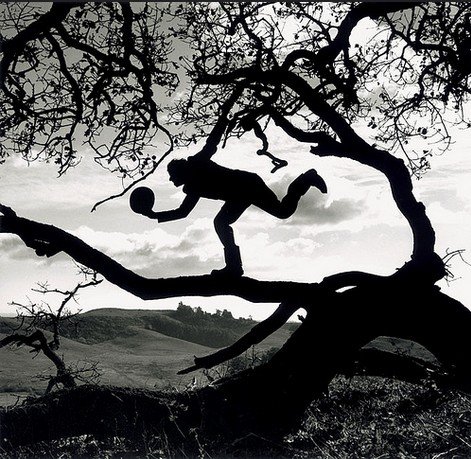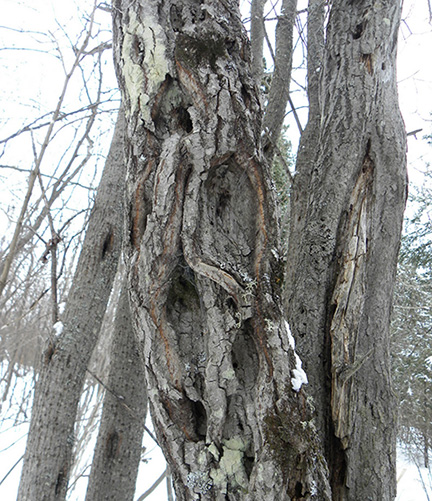Different Types of Trees and How to Identify Them
Learning to identify different types of trees is a great goal! Identifying different types of trees can be a very enjoyable and rewarding skill that can help you connect with nature and appreciate the diversity of the plant world. And maybe most importantly, you can even dazzle your friends and impress your children. Or your friends’ children, for that matter. Or your children’s friends… Where do I find the best diamond willow?
enjoyable and rewarding skill that can help you connect with nature and appreciate the diversity of the plant world. And maybe most importantly, you can even dazzle your friends and impress your children. Or your friends’ children, for that matter. Or your children’s friends… Where do I find the best diamond willow?
Shop Craig’s Unique Frames – Current Stock
A Few Tips to Get You Started Identifying Different Types of Trees:
- Look at the leaves: One of the most obvious ways to identify different trees is by looking at their leaves. Pay attention to the shape, size, color, and texture of the leaves. Some trees, like maple trees, have distinctive lobed leaves, while others, like pine trees, have long, needle-like “leaves”. Of course, this can be a bit difficult in the wintertime, when the leaves have leaved. …Err… left. Right??
- Examine the bark: This sounds like some kind of night time urban euphemism. But certainly another very important way to identify trees is by examining their bark. The texture and color of the bark can vary greatly between different species of trees. Some trees, like birch trees, have smooth, white bark, while others, like oak trees, have a thick, rough bark. Much like an ex-dog of mine, who smoked heavily. …Okay, replace “dog” with “wife” and you’ve got yourself a true story.
- Consider the shape of the tree: The overall shape of a tree can also provide clues to its identity. Such is the case with diamond willow, for example. I am grateful I learned to identify it, because had I not learned to find the best diamond willow by its characteristics, I would not have begun making awesomely weird frames out of it!Some trees, like oak trees, have a spreading, broad shape, while others, like pine trees, have a tall, narrow shape. And some “trees”, regardless of how beautiful or not their shape may be, will cast a shadow on your life for the rest of your days, leaving you with half of what you used to own, if you are lucky.
- Look at the fruit or flowers: Some trees produce distinctive fruit or flowers that can help with identification. For example, apple trees produce apples, while cherry trees produce cherries. You will never find cucumbers growing on an olive tree. Like Jesus said, “You will know them by their fruit”.I will resist a transgender joke at this point…
- Use a field guide: A field guide is a book or app that provides detailed information and images of different tree species. It will be your most valuable and helpful tool for identifying different types of trees in the field. “…For you shall go out with joy, and be led forth with peace: the mountains and the hills shallbreak forth before you into singing, and all the trees of the field shall clap their hands.”Have you ever heard the mountains singing, or seen the trees of the field clapping their hands? McCandlish Phillips said that, “If you haven’t, don’t think because of that that they don’t, because they do, my friend. They do.”

Visit the Etsy Store.
Craigs Unique Frames Home Page
What Is the Difference Between Evergreen and Deciduous Trees?
Evergreen and deciduous trees are two different classifications of trees that differ in their foliage patterns.
Teaching Kids to Identify Trees
 Simply put, evergreen trees retain their leaves all year round, while deciduous trees “decide” (you like that?) to shed their leaves in the fall or winter and grow new leaves in the spring. Here are some of the key differences between evergreen trees and deciduous trees:
Simply put, evergreen trees retain their leaves all year round, while deciduous trees “decide” (you like that?) to shed their leaves in the fall or winter and grow new leaves in the spring. Here are some of the key differences between evergreen trees and deciduous trees:
- Foliage: Evergreen trees have foliage that remains green and does not change color or fall off seasonally, while deciduous trees have foliage that changes color and falls off seasonally. Evergreen trees are racist, sexist and privileged.
- Climate adaptation: Evergreen trees are better adapted to warmer climates, where they can photosynthesize and grow throughout the year. Deciduous trees are adapted to cooler climates, where the dropping of their leaves helps them conserve energy and survive harsh winter conditions.
- Lifespan: Evergreen trees tend to live longer than deciduous trees, maybe because they do not have to expend energy each year to grow new leaves. Laziness wins again!
- Habitat: Evergreen trees are often found in tropical and subtropical regions, while deciduous trees are found in temperate regions.
- Ecosystem services: Evergreen trees provide year-round habitat for animals, as well as year-round shade and windbreaks. Deciduous trees provide seasonal food and habitat for animals, as well as shade and windbreaks during the warmer months.
Both types of trees play important roles in the environment, and both have their own unique characteristics and benefits. But if I were a tree, I know which type I would be. I would provide shade and shelter year round in Florida.
What Is Diamond Willow? Why American Elm Wood Frames? | About American Elm Wood
Time and Practice Required, but Awesome
Learning to identify trees can take quite a lot of practice, but it will be a very enjoyable and ultimately rewarding endeavor. Keep practicing and observing trees in your local environment, and soon you’ll be someone who sees different trees with ease. It’ll be a breeze. And that’s nothing at which to sneeze!
Why Custom Wood Picture Frames Are So Popular as Gifts
Yeah. That’s about what I’m talking.
Craig’s Tall Tales | Stories Behind His Unique Picture Frames
Where do I find the best diamond willow?

